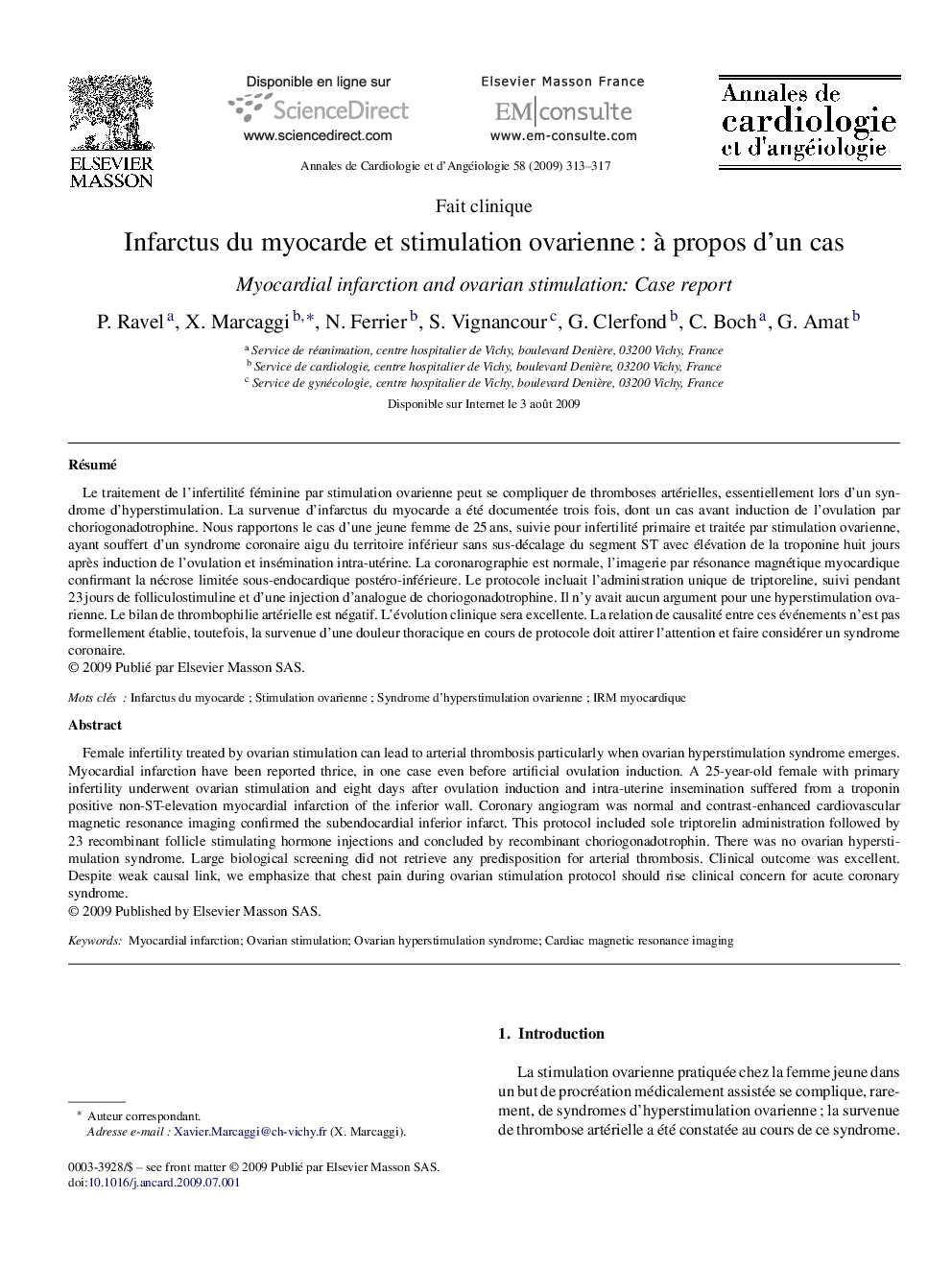| Article ID | Journal | Published Year | Pages | File Type |
|---|---|---|---|---|
| 2869500 | Annales de Cardiologie et d'Angéiologie | 2009 | 5 Pages |
RésuméLe traitement de l’infertilité féminine par stimulation ovarienne peut se compliquer de thromboses artérielles, essentiellement lors d’un syndrome d’hyperstimulation. La survenue d’infarctus du myocarde a été documentée trois fois, dont un cas avant induction de l’ovulation par choriogonadotrophine. Nous rapportons le cas d’une jeune femme de 25 ans, suivie pour infertilité primaire et traitée par stimulation ovarienne, ayant souffert d’un syndrome coronaire aigu du territoire inférieur sans sus-décalage du segment ST avec élévation de la troponine huit jours après induction de l’ovulation et insémination intra-utérine. La coronarographie est normale, l’imagerie par résonance magnétique myocardique confirmant la nécrose limitée sous-endocardique postéro-inférieure. Le protocole incluait l’administration unique de triptoreline, suivi pendant 23 jours de folliculostimuline et d’une injection d’analogue de choriogonadotrophine. Il n’y avait aucun argument pour une hyperstimulation ovarienne. Le bilan de thrombophilie artérielle est négatif. L’évolution clinique sera excellente. La relation de causalité entre ces événements n’est pas formellement établie, toutefois, la survenue d’une douleur thoracique en cours de protocole doit attirer l’attention et faire considérer un syndrome coronaire.
Female infertility treated by ovarian stimulation can lead to arterial thrombosis particularly when ovarian hyperstimulation syndrome emerges. Myocardial infarction have been reported thrice, in one case even before artificial ovulation induction. A 25-year-old female with primary infertility underwent ovarian stimulation and eight days after ovulation induction and intra-uterine insemination suffered from a troponin positive non-ST-elevation myocardial infarction of the inferior wall. Coronary angiogram was normal and contrast-enhanced cardiovascular magnetic resonance imaging confirmed the subendocardial inferior infarct. This protocol included sole triptorelin administration followed by 23 recombinant follicle stimulating hormone injections and concluded by recombinant choriogonadotrophin. There was no ovarian hyperstimulation syndrome. Large biological screening did not retrieve any predisposition for arterial thrombosis. Clinical outcome was excellent. Despite weak causal link, we emphasize that chest pain during ovarian stimulation protocol should rise clinical concern for acute coronary syndrome.
